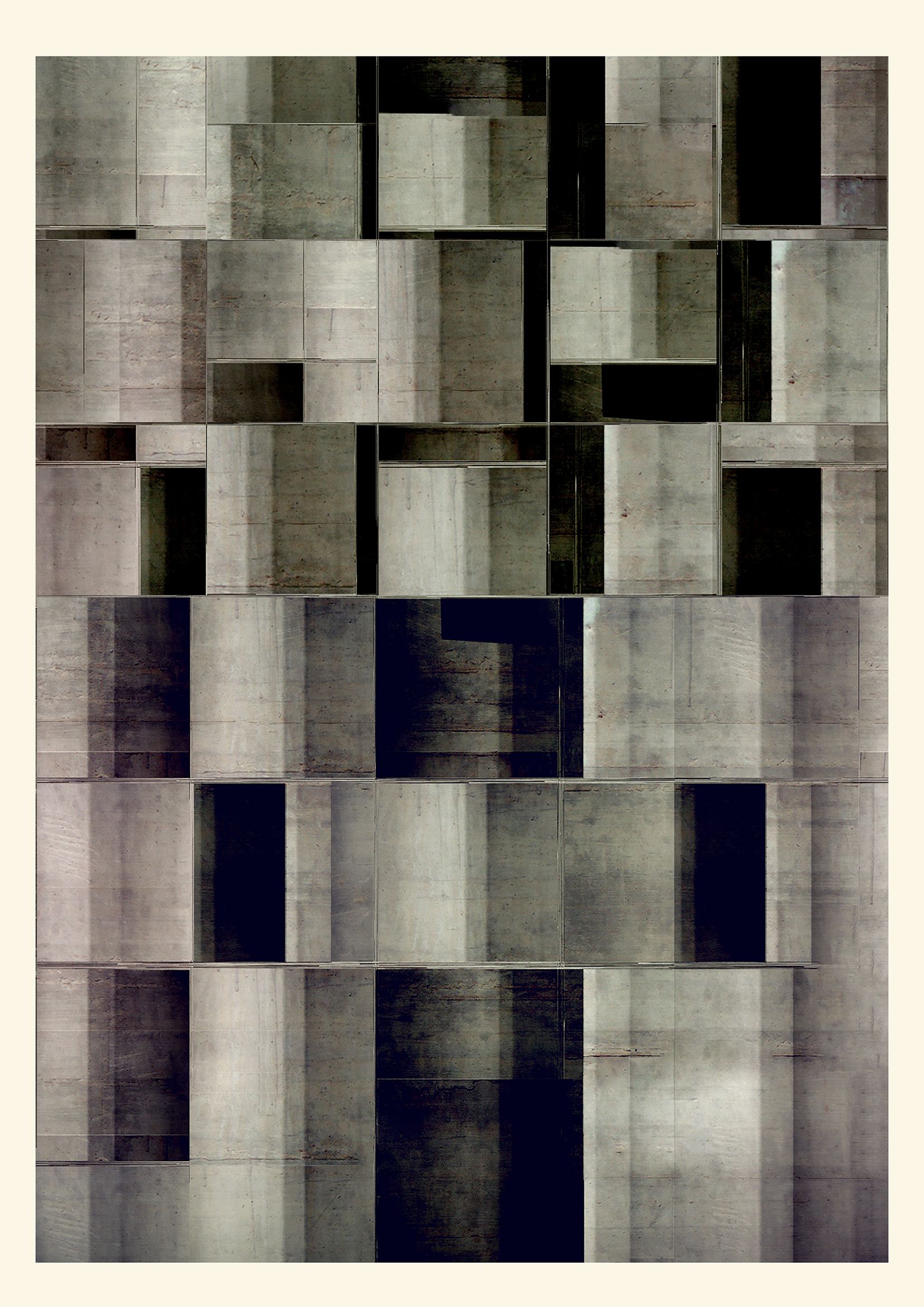
Dusa Jesih, Cathedral , from Architextural digest serie, flatbed print on stainless steel plate, 70x100 cm, 2016-18
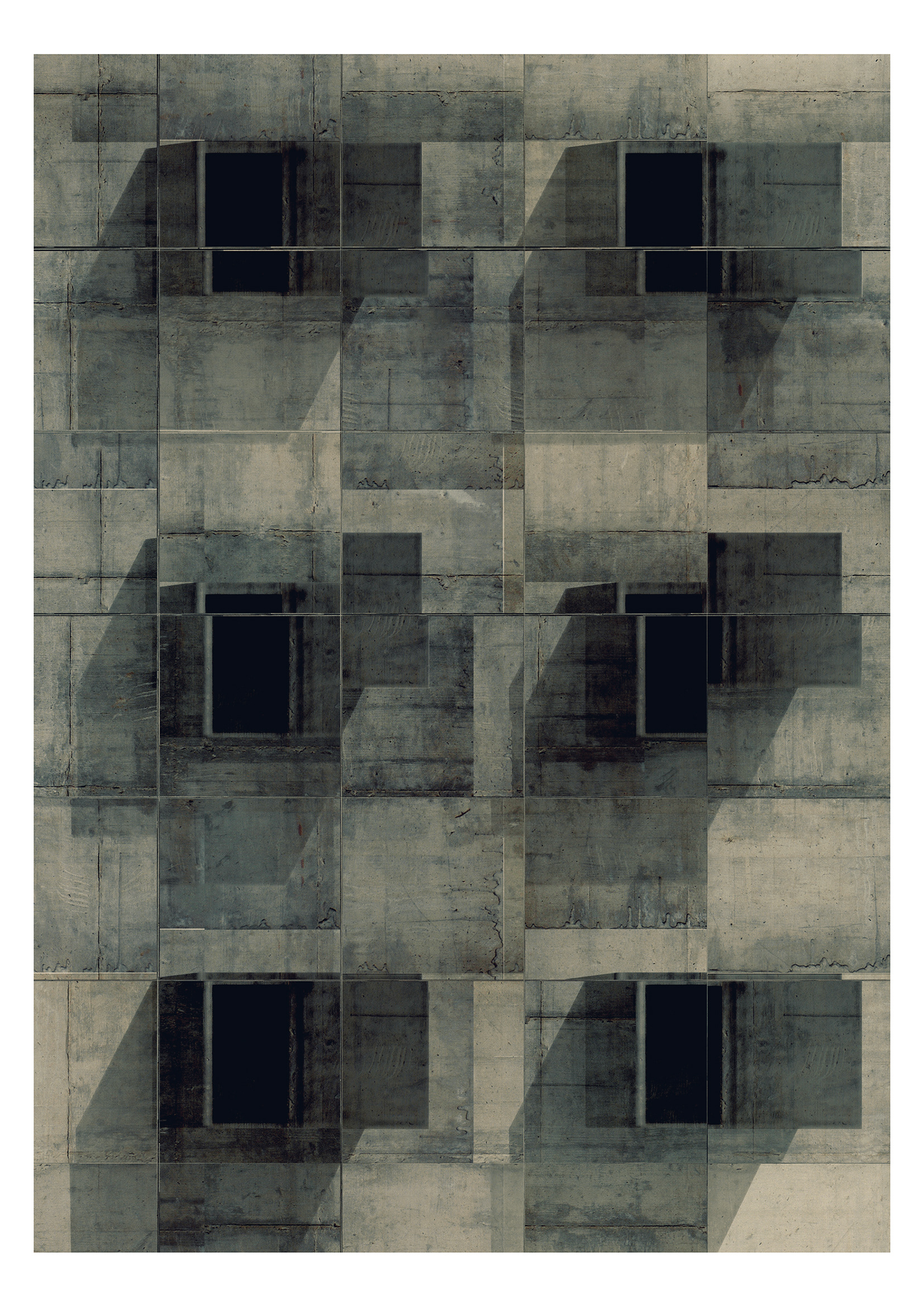
Dusa Jesih, Codominium I, A4 Digital Fineart print I/V, Hahnemühle photo mat, 2018
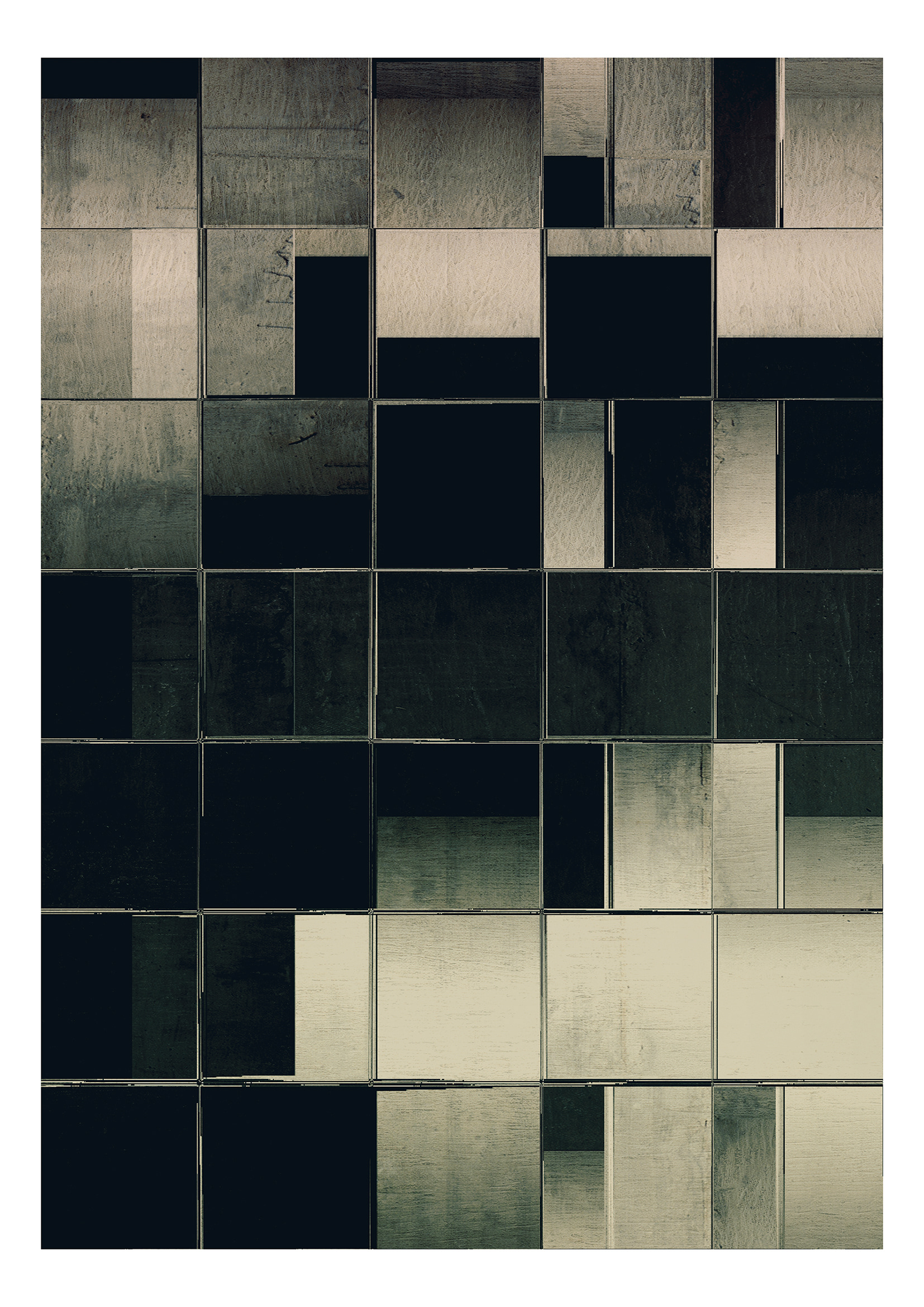
Dusa Jesih, Codominium II, A4 Digital Fineart print I/V, Hahnemühle photo mat, 2018
Dusa Jesih, a serie of I/I prints named Architectural digest, metal plate 70x100, 2016
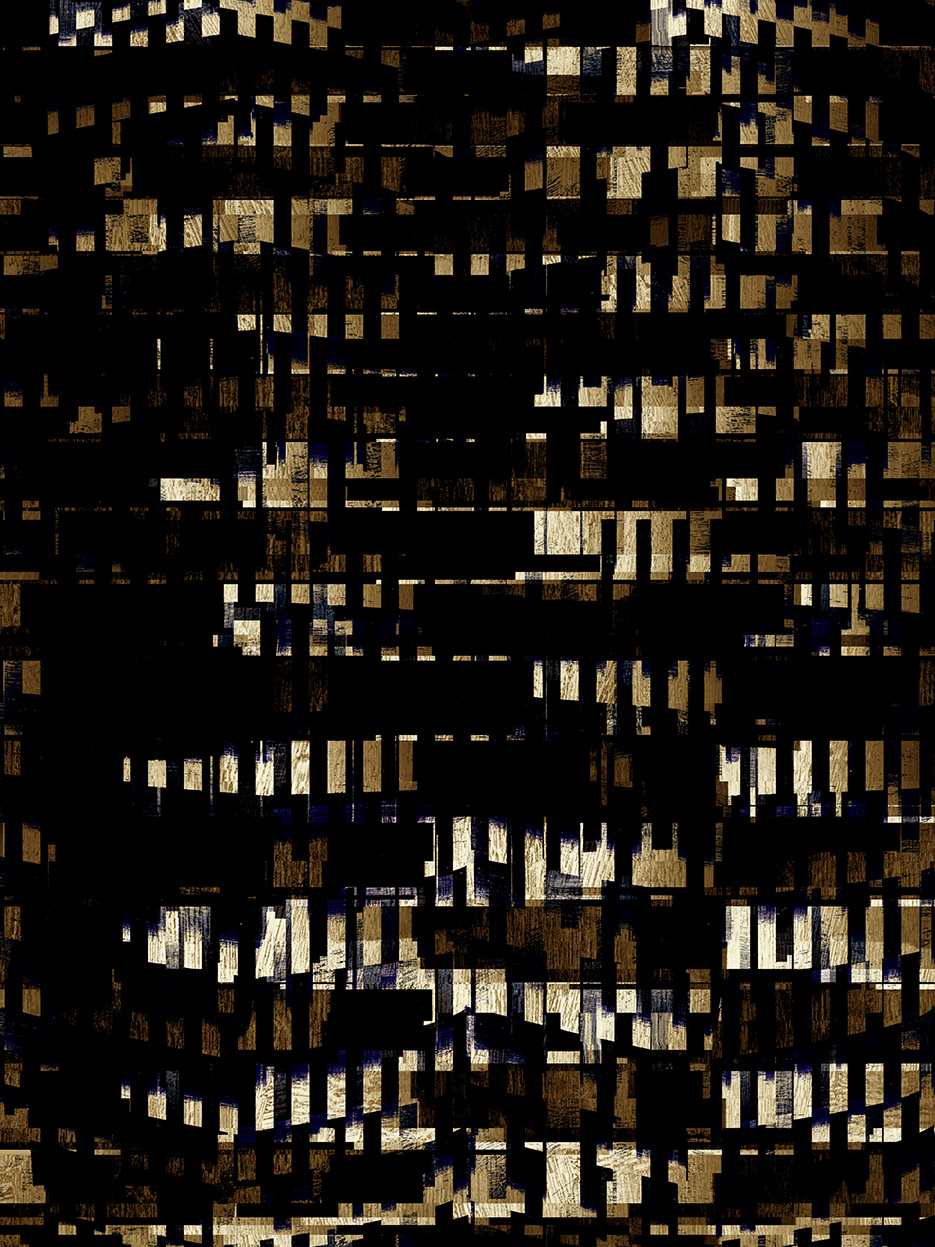
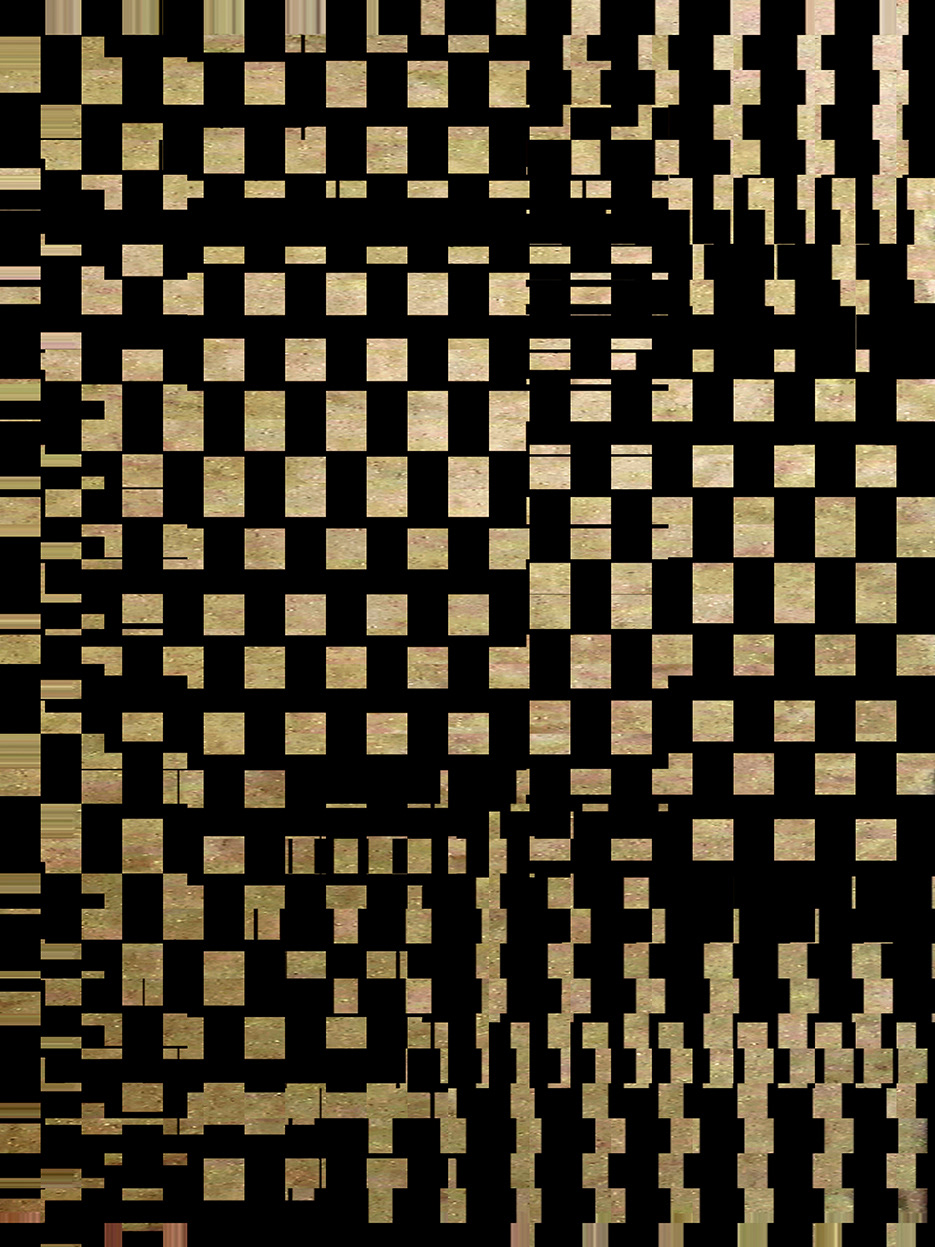
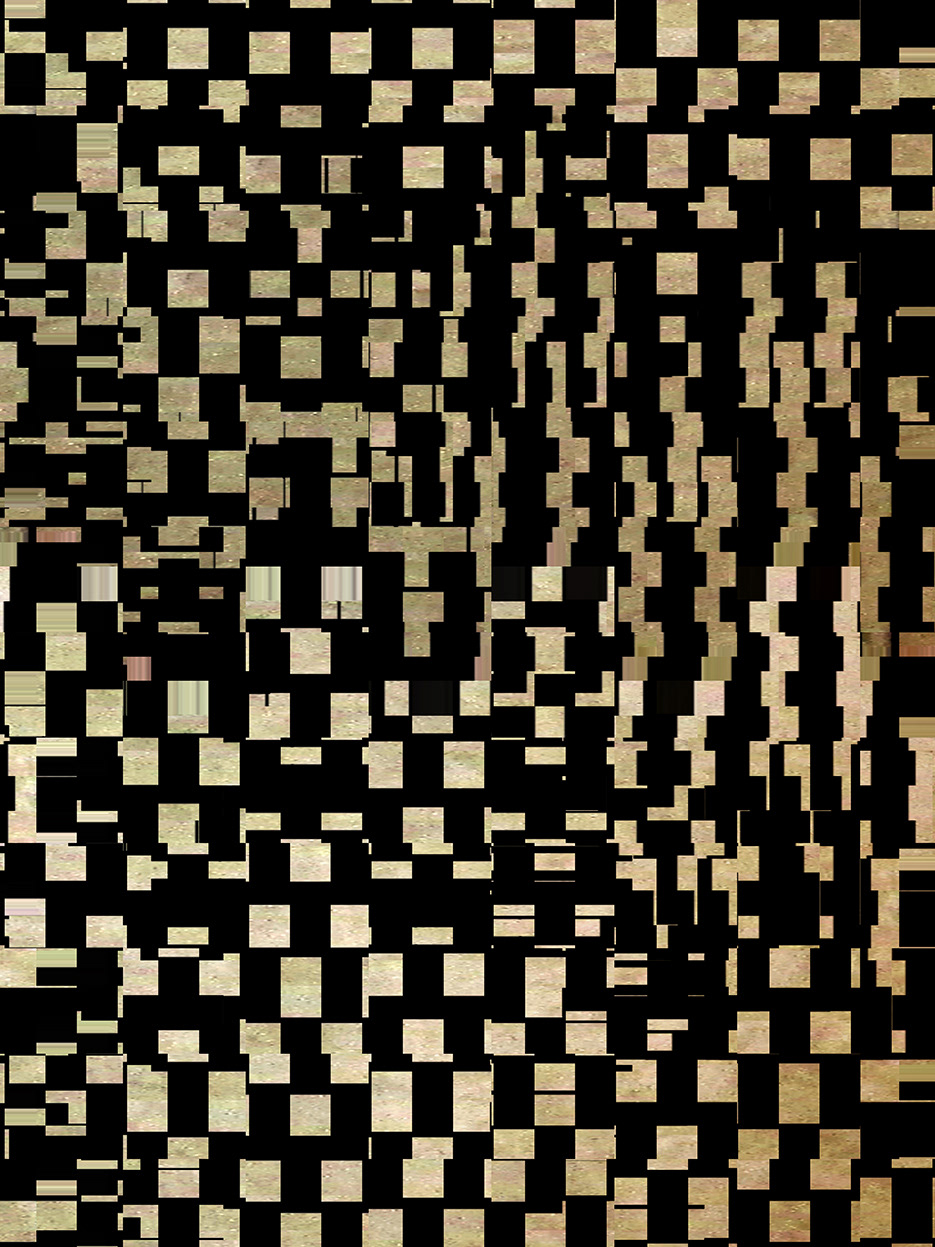
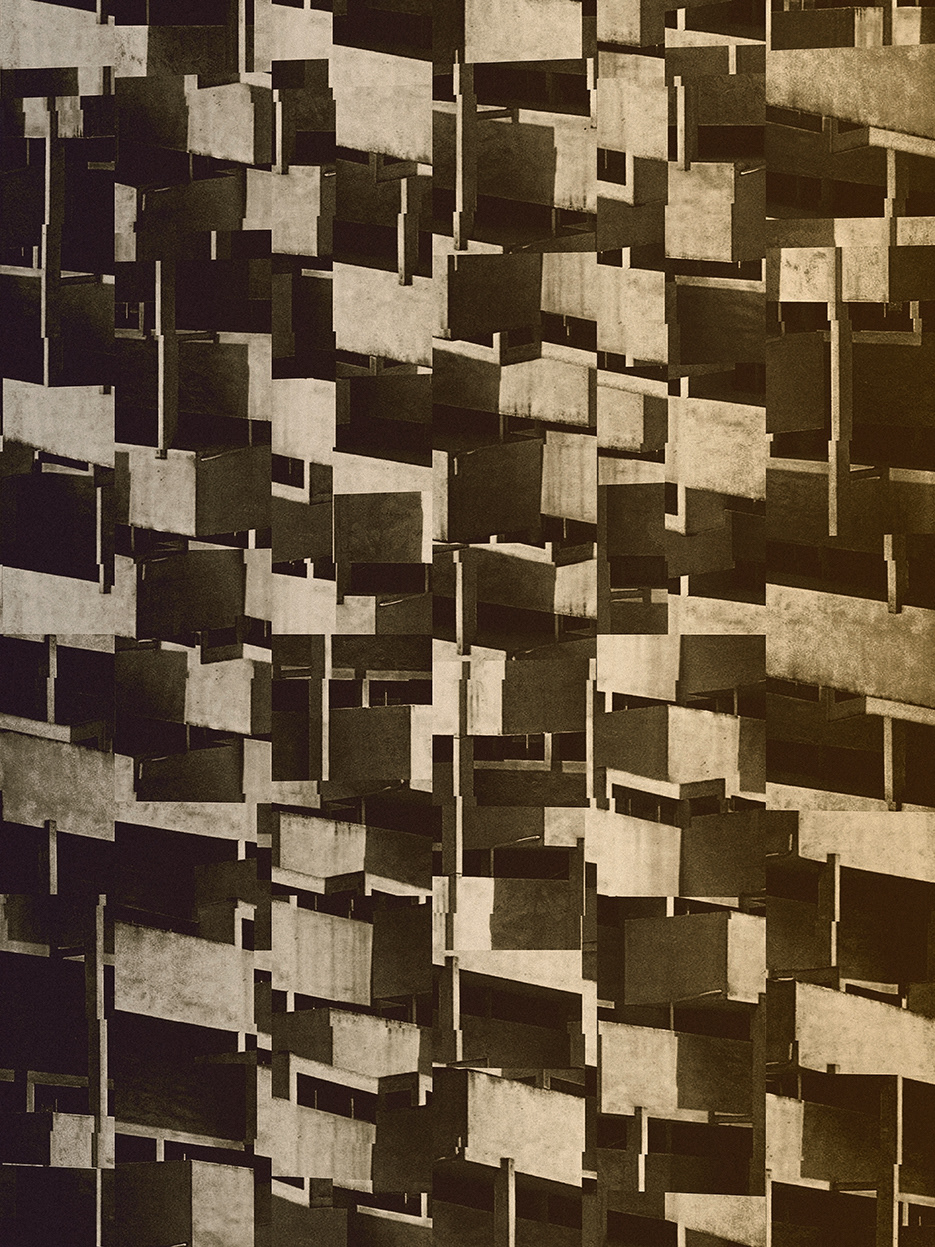
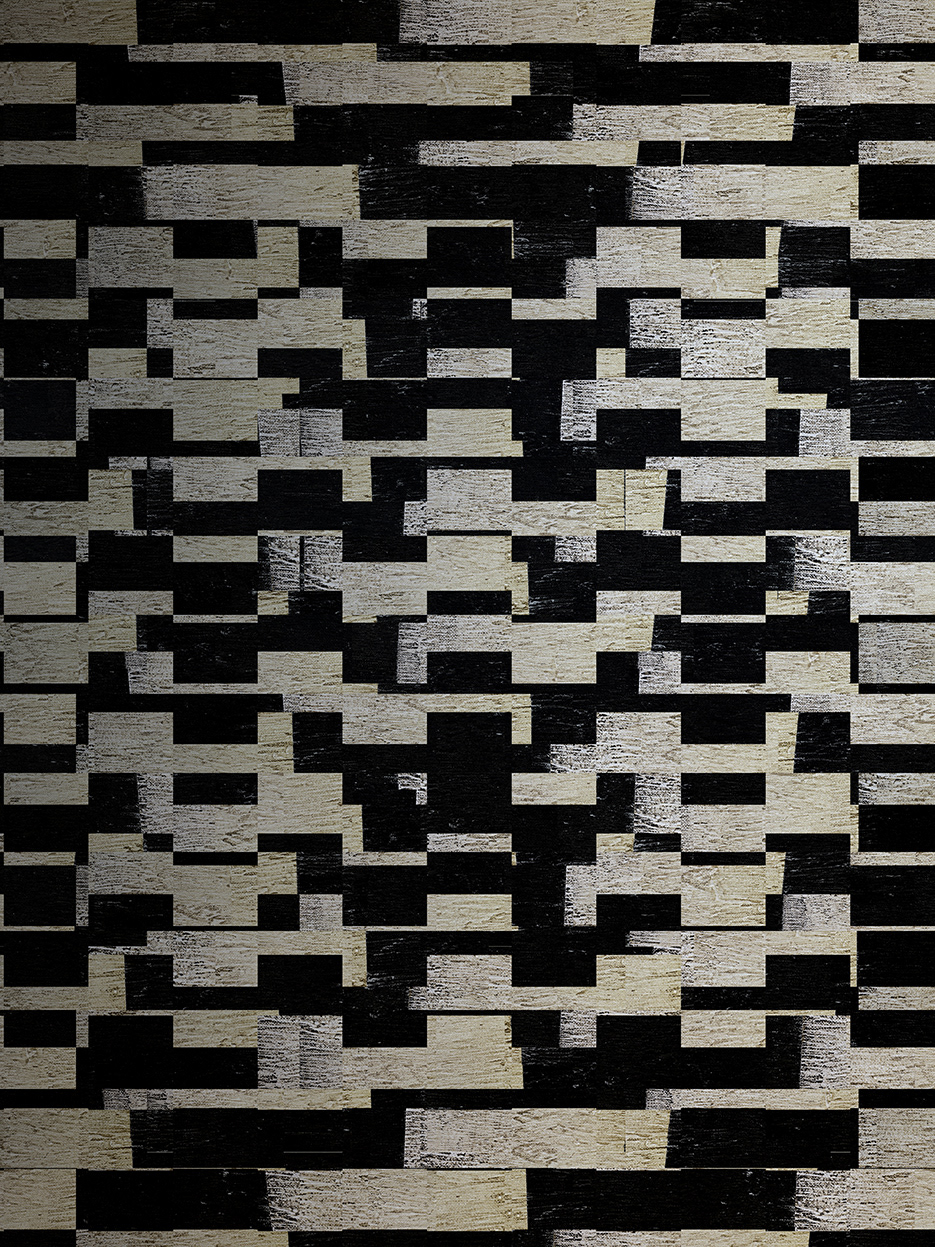
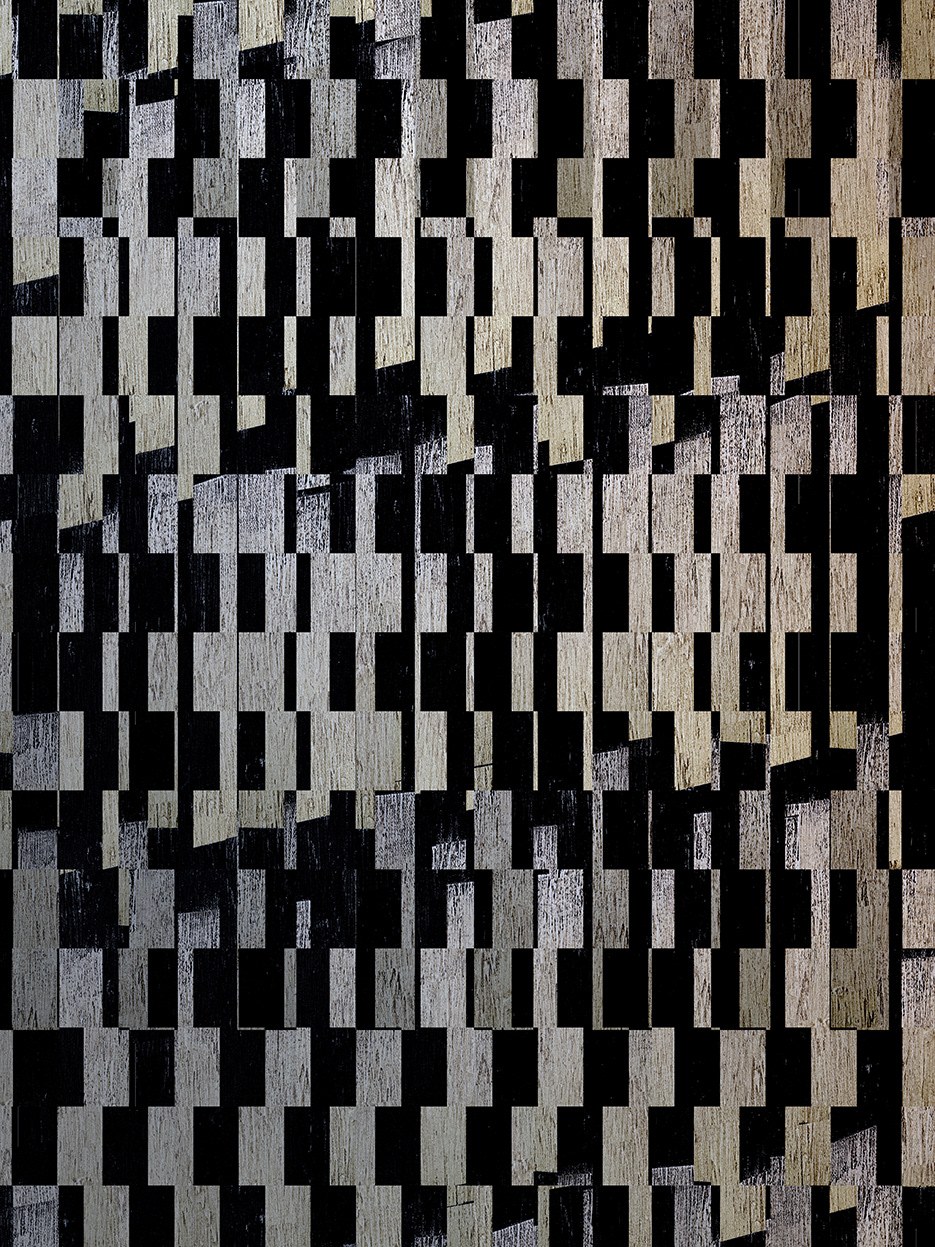
The artistic formulations that tend to build an image field with precisely demarcated geometric shapes and mostly uniform color surfaces are relatively rare in Slovenian contemporary art. This could be a reason, at least partially, that the existing examples of the research of optical manipulation based on analytical approach and geometric principles are so interesting. One of them represents the work of Dusa Jesih. It is based on the reduction of visual data by a strict, structurally clear model to which she changes the rhythm of relations between angular (but not necessarily correct, geometric) shapes and color values. Whether it is a monochrome work that she combines into various polyptych compositions based on tangram or to create a visual rhythm by placing simple, straight-cut surfaces of contrasting colors, the language of the painter and graphic artist is bound to the aesthetics of geometric abstraction.
About the Series of graphics »Architectural Digest «
Despite the absence of a connection with visible nature or concrete objects, in the purity of shapes and by searching for ideal spatial relationships in them, we could uncover affinity to the idea of architectural brutalism. In contrast, the fact is that computer-generated graphics are generated through image permutation. It is therefore a reverse approach where the visual field is built in a process of fragmentating the basic formal structure. The artist found a chromatic chord for the ensemble in a contrasting scale of black-ochre tones. The composition of various geometric shapes has no tangible spatial guidelines, and the shapes seem to be spilling over the edge of the plate. Since it is centerless, therefore without beginning and end, it tends towards a physical emptiness. However, its emptiness is not undefined; the colored surfaces on the metal plate are subject to rhythmical interchange which creates the impression of dynamics and as such becomes an energy field that expands and extends much like a space. The artistic creativity of Dusa Jesih does not belong to decorativeness but reveals the artist's view of the world. It is a world of dialogue in which a series of color-contrasting shapes are linked to the vital energy of constant change. Alenka Trebušak
About the Series of graphics »Architectural Digest «
Despite the absence of a connection with visible nature or concrete objects, in the purity of shapes and by searching for ideal spatial relationships in them, we could uncover affinity to the idea of architectural brutalism. In contrast, the fact is that computer-generated graphics are generated through image permutation. It is therefore a reverse approach where the visual field is built in a process of fragmentating the basic formal structure. The artist found a chromatic chord for the ensemble in a contrasting scale of black-ochre tones. The composition of various geometric shapes has no tangible spatial guidelines, and the shapes seem to be spilling over the edge of the plate. Since it is centerless, therefore without beginning and end, it tends towards a physical emptiness. However, its emptiness is not undefined; the colored surfaces on the metal plate are subject to rhythmical interchange which creates the impression of dynamics and as such becomes an energy field that expands and extends much like a space. The artistic creativity of Dusa Jesih does not belong to decorativeness but reveals the artist's view of the world. It is a world of dialogue in which a series of color-contrasting shapes are linked to the vital energy of constant change. Alenka Trebušak
The use of artistic formulations that create an image field comprised of precisely demarcated geometric shapes and mostly uniform color surfaces is quite rare in Slovenian contemporary art. This may be one of the reasons why existing examples of research on optical manipulation based on an analytical approach and geometric principles are so interesting. One such example is the work of Dusa Jesih, which is based on reducing visual data by using a strict, structurally clear model, and changing the rhythm of relations between angular shapes (not necessarily correct geometric shapes) and color values. Whether she combines monochrome works into various polyptych compositions based on tangram or creates a visual rhythm by placing simple, straight-cut surfaces of contrasting colors, the language of the painter and graphic artist is bound to the aesthetics of geometric abstraction. Regarding the series of graphics called "Architectural Digest", despite the absence of a connection with visible nature or concrete objects, we can still uncover an affinity to the idea of architectural brutalism in the purity of shapes and by searching for ideal spatial relationships in them. In contrast, computer-generated graphics are built through image permutation, which is a reverse approach where the visual field is constructed by fragmenting the basic formal structure. The artist found a chromatic chord for the ensemble in a contrasting scale of black-ochre tones. The composition of various geometric shapes has no tangible spatial guidelines, and the shapes appear to be spilling over the edge of the plate. Since it is centerless, without a beginning or end, it tends towards a physical emptiness. However, its emptiness is not undefined; the colored surfaces on the metal plate are subject to rhythmical interchange, which creates the impression of dynamics and becomes an energy field that expands and extends like a space. Dusa Jesih's artistic creativity does not belong to decorativeness but rather reveals her view of the world as a dialogue in which a series of color-contrasting shapes are linked to the vital energy of constant change.
Likovne formulacije, ki težijo k izgradnji slikovnega polja z natančno razmejenimi geometrijskimi oblikami in večinoma enotnimi barvnimi ploskvami, so v slovenski sodobni umetnosti relativno redek pojav. Morda so delno tudi iz tega razloga obstoječi primeri raziskovanja optične manipulacije na podlagi analitičnega pristopa in geometričnih načel tako zelo zanimivi. Enega izmed njih predstavlja delo Duše Jesih. Zasnovano je na redukciji vizualnih podatkov po strogem, konstrukcijsko jasnem modelu, kateremu spreminja ritem razmerij med kotnimi (ne pa tudi obvezno pravilnimi geometrijskimi) liki ter barvnimi vrednostmi. Najsi gre za monokromna dela, ki jih kombinira v različne poliptične sestave na osnovi tangrama ali pa za vzpostavljanje vizualnega ritma z nizanjem preprostih, ravno odsekanih ploskev kontrastnih barv, je jezik slikarke in grafičarke zavezan estetiki geometrijske abstrakcije. Na tokratni razstavi se Jesihova predstavlja z dvema grafikama iz serije »Architectural digest«. Kljub odsotnosti povezave z vidno naravo ali konkretnimi predmeti, bi lahko v čistosti oblik ter iskanju idealnih prostorskih razmerij v njih odkrivali pripadnost ideji arhitekturnega brutalizma. V nasprotju s tem pa je dejstvo, da sta računalniško generirani grafiki nastali prek permutacije slike. Gre torej za obratni pristop, kjer se vizualno polje gradi procesualno, z razdrobitvijo osnovne oblikovne strukture. Kromatske akorde za nastali sestav je umetnica našla v kontrastni skali črno- okrastih tonov. Kompozicija različnih geometrijskih oblik je brez oprijemljivih prostorskih smernic in liki se navidezno prelivajo prek roba plošče. Ker je brez središča, brez začetka in brez konca, teži k fizični praznini. Vendar njena praznina ni nedefinirana; barvne ploskve na kovinskem nosilcu so podvržene ritmičnemu izmenjavanju, ki ustvarja vtis dinamike in kot takšno postaja energetsko polje, ki se širi in razteza kot vesolje.
Likovna ustvarjalnost Duše Jesih ne pripada dekorativnosti, temveč razkriva umetničin pogled na svet. Gre za svet dialoga, v njem pa se nizi barvno nasprotnih likov povezujejo z življenjsko energijo nenehnih sprememb. Alenka Trebušak
"Iskanje matrice"
Galerija Velenje že enajsto leto skupaj s Slovenskim društvom likovnih kritikov pripravlja tematske razstave, ki predstavljalo različne žanre in tehnike vizualne umetnosti. Letos je to grafika. Ta zanimiva tehnika je v zadnjih letih sprožila mnoga vprašanja in odgovore o širini njene izvedljivosti. Sedemnajst likovnih kritikov si je zastavilo elementarno vprašanje o vlogi matrice v grafiki.
Razstava vključuje dela 32 slovenskih avtorjev, ki so nastajala od sredine 20. stoletja do danes. Likovni kritiki so izbrali od enega do tri avtorje, za katere menijo, da so pomembno prispevali k razvoju grafike v omenjenem obdobju ali da so kako drugače zanimivi v kontekstu izhodiščnega vprašanja: Bogdan Borčič, Danijel Demšar, Vesna Drnovšek, Črtomir Frelih, Samuel Grajfoner, Danilo Jejčič, Boris Jesih, Duša Jesih, Alenka Koderman, Gani Llalloshi, Vladimir Makuc, Adriana Maraž, Živko Marušič, Nataša Mirtič, Ivo Mršnik, Valentin Oman, Janko Orač, Oliver Pilić, Veno Pilon, Marjan Pogačnik, Arjan Pregl, Branimir Ritonja, Lojze Spacal, Zora Stančič, Mitja Stanek, Sanja Stropnik, Helena Tahir, Klavdij Tutta, V.S.S.D., Franko Vecchiet, Aleksandra Zalokar, Mojca Zlokarnik, Nika Zupančič.
Izbor del: Aleksander Bassin, Mario Berdič, Majda Božeglav Japelj, Petja Grafenauer, Monika Ivančič Fajfar, Milena Koren Božiček, Nataša Kovšca, Vesna Krmelj, Maja Marinkovska, Lev Menaše, Goran Milovanović, Tatjana Pregl Kobe, Vesna Teržan, Alenka Trebušak, Petra Vencelj, Tomislav Vignjević, Milena Zlatar.